Canadian gold and silver juniors are leading project advancement at home and abroad. The following are the top-10 Canadian-headquartered precious metals companies that are developing projects but not yet in commercial production, ranked according to market capitalization in late-June. Royalty and streaming companies are not included in this list.
1. NovaGold Resources
Market cap: US$2.91 billion

An undated photo of the camp at NovaGold Resources’ Donlin Gold project in Alaska, now a joint venture with Barrick Gold. Credit: NovaGold Resources.
NovaGold Resources (TSX: NG; NYSE-AM: NG) owns 50% of the Donlin gold project in Alaska, with Barrick Gold owning the other 50%. The project is located in the historic Kuskokwim Gold Belt in southwestern Alaska, 16 km north of the village of Crooked Creek. The Donlin project is one of the highest grade known open-pit gold deposits, with a measured and indicated resource of 541 million tonnes grading 2.24 grams gold per tonne for 39 million oz. gold.
The company says it is well funded and does not need to raise money until a decision is taken to build the project. As of June 2020, NovaGold held US$134.3 million in cash and term deposits on its balance sheet. The company’s largest shareholder is Electrum Strategic Resources LP & Affiliates. Other institutional shareholders include Fidelity Management & Research Co., Paulson & Co., BlackRock, Van Eck Associates, First Eagle Investment Management and EXOR Investments. Together the top ten institutions hold about 61% of the company’s issued and outstanding shares.
2. MAG Silver
Market cap: US$1.23 billion

The portal at Fresnillo and MAG Silver’s Juanicipio silver project in Mexico. Credit: Mag Silver.
MAG Silver (TSX: MAG; NYSE-AM: MAG) is developing one of the highest grade and largest primary silver assets in the world – its 44%-owned Juanicipio project in Mexico’s Fresnillo Silver Trend in Zacatecas state. The project is a joint-venture with Fresnillo Plc, the world’s largest primary silver producer and Mexico’s largest gold producer, which owns 56%. MAG Silver is currently constructing and developing the surface and underground infrastructure on the property to support a 4,000 tonne-per-day mining operation.
Juanicipio consists of high-grade silver-gold-lead-zinc epithermal vein deposits. Construction is well underway, detailed engineering is nearing completion and all major process equipment has been purchased and received on-site. Underground development has approached 27 km, and Juanicipio is expected to reach 85% nameplate capacity in the fourth quarter of 2021, and 90-95% of nameplate capacity in 2022. Commissioning of the flotation plant will begin in 2021 and, in the interim, mineralized material from development and initial production stopes will be processed at the Fresnillo beneficiation plant starting in 2020. At the same time, exploration is ongoing with the intention to increase the deeper resources and target new veins.
3. Seabridge Gold
Market cap: US$1.09 billion

Visitors at Seabridge Gold’s KSM gold-copper project, 70 km north of Stewart, British Columbia. Source: Seabridge Gold
Seabridge Gold’s (TSX: SEA; NYSE: SA) principal projects are in Canada. Its Kerr-Sulphurets-Mitchell (KSM) project in British Columbia is one of the largest undeveloped gold projects in the world measured by reserves, with proven and probable reserves of 38.8 million oz. gold and 10.2 billion lb. copper. The project received its Environmental Assessment Certificate from the provincial authorities and final federal approval in 2014.
Elsewhere in B.C. Seabridge owns the Iskut project, which the company obtained with its acquisition of SnipGold in 2016. Iskut is 110 km northwest of Stewart and 30 km by air from its KSM project, and Seabridge is testing for a gold-copper porphyry similar to those discovered at KSM.
In the Northwest Territories, Seabridge is advancing its Courageous Lake project. The 330-sq.-km project has estimated proven and probable reserves of 6.5 million oz. gold in the open-pit FAT deposit. Courageous Lake covers almost all of the 53 km long Mathews Lake Greenstone Belt, which historically hosted two high-grade gold mines and has gold showings all along its length.
Earlier this year, Seabridge acquired 100% of the 3 Aces gold project in Canada’s Yukon territory. Three Aces is a district-scale, orogenic-gold project consisting of 1,734 claims covering 357 sq. km in southeastern Yukon.
Outside Canada, Seabridge owns the Snowstorm and Goldstorm properties in Nevada.
4. SilverCrest Metals
Market cap: US$934.04 million

Workers at a portal at SilverCrest Metals’ Las Chispas gold-silver project in Sonora, Mexico. Credit: SilverCrest Metals.
SilverCrest Metals (TSX: SIL; NYSE-AM: SILV) is focused on its high-grade, vein-hosted Las Chispas silver-gold project in Mexico, 180 km northeast of Hermosillo in Sonora state. The property consists of 28 concessions over 14 square kilometres. The company is working on a feasibility study on the project and hopes to complete it before the end of 2020. A preliminary economic assessment (PEA) in early 2019 outlined a 1,250 tonne-per day production rate over an initial mine life of 8.5 years, with average annual production of 5.38 million oz. silver and 55,700 oz. gold, or 9.6 million silver-equivalent ounces. The company says drilling to date has only really tested 10 of the 36 known veins at Las Chispas, and the company is currently operating 12 drill rigs on the project.
SilverCrest’s other projects include Cruz de Mayo, also in Mexico’s Sonora state, 163 km northeast of Hermosillo. It also owns the Silver Angel property, 165 km northeast of Hemosillo, and the Estacion Llano property, 140 km north of Hermosillo.
5. Osisko Mining
Market cap: US$900 million

Osisko Mining workers underground at the Windfall gold project in Quebec. Credit: Osisko Mining.
Osisko Mining (TSX: OSK) is an exploration company focused on the acquisition, exploration and development of precious metal resource properties in Canada. Its flagship project is the high-grade Windfall Lake gold deposit located between Val-d’Or and Chibougamau in Quebec. It also holds a 100% undivided interest in a large area of claims in the surrounding Urban Barry area and nearby Quevillon area (over 3,300 sq. km), and a 100% stake in the Marban project in the heart of Quebec’s Abitibi gold mining district. It also owns properties in northeastern Ontario’s Larder Lake mining area, including the Jonpol and Garrcon deposits on its Garrison property, the Buffonta past-producing mine and the Gold Pike mine property.
Windfall Lake consists of 285 individual claims covering 125 sq. km and is 700 km northwest of Montreal, 200 km east of Val-d’Or and 115 km east of Lebel-sur-Quevillion. Windfall’s indicated resources stand at 4.13 million tonnes grading 9.1 grams gold per tonne for 1.21 million oz. gold and inferred resources of 14.53 million tonnes grading 8.4 grams gold for 3.94 million ounces. The most significant gold mineralization defined to date is currently known for a vertical extent of about 1,200 metres in four zones. Earlier this year, the company completed its Discovery 1 Deep drill hole, a 3,467-metre drill hole and the longest diamond drill hole in Canada.
On June 1, Osisko announced a $150 million bought deal financing.
6. Great Bear Resources
Market cap: US$716.13 million

A drill rig on Great Bear Resources’ Dixie Lake gold property in Red Lake, Ontario. Credit: Great Bear Resources.
Great Bear Resources (TSXV: GBR; US-OTC: GTBAF) is focused on the Red Lake district in northwestern Ontario, where the company controls more than 300 sq. km of prospective land across four projects: Dixie, Pakwash, Dedee and Sobel. Dixie is Great Bear’s flagship project, 25 km southeast of the town of Red Lake. The Dixie project consists of 91 sq. km of contiguous claims that extend over 22 kilometres.
Over the last two years, Great Bear has made multiple high-grade discoveries: the Dixie Limb, Hinge, Bear-Rimini, Yuma, Auro, Yauro, Viggo and Gap zones. Its last six discoveries are now considered one zone that is hosted by the LP Fault deformation zone, which overall is an 18 km target that is being explored by the company. Great Bear has completed 83 of about 300 planned drill holes into the LP Fault target as part of its 5 km long by 500-metre deep grid drill program, and gold mineralization has been intersected in all of the drill holes for which assays have been returned.
In June, Great Bear reported the highest grade, widest gold interval drilled at the LP Fault to date, with an interval of 576 grams gold per tonne over 1 metre, within a broader interval of 31.33 grams gold over 21 metres. The company also recently announced the discovery of a new high-grade zone called Arrow, with an intercept of 19.32 grams gold per tonne over 2 metres, including 50 grams gold over 1 metre, within a broader interval of 3 grams gold over 15 metres.
7. Novo Resources
Market cap: US$530.18 million

An excavator moves earth at Novo Resources’ Beaton’s Creek gold property in Western Australia. Credit: Novo Resources.
Novo Resources (TSXV: NVO; US-OTC: NSRPF) has gold projects in western Australia’s Pilbara region. Its focus is the Egina gold project, a joint-venture with Japan’s Sumitomo Corporation. Last year, the company reported a total of 107.88 grams of raw gold that were recovered from 95 cubic metres of gravel. Novo believes lag gravels mantling the vast erosional terrace at Egina could host a significant gold deposit. The company’s permits allow it excavate and process up to 50,000 tonnes of gravel, subject to heritage clearances.
Novo Resources also owns the Beatons Creek gold project, where it is exploring for gold-bearing conglomerates within the Hardey Sandstone Formation. Beatons Creek has indicated resources of 457,000 oz. gold at a grade of 2.1 grams gold per tonne and another 446,000 inferred oz. gold at a grade of 3.2 grams gold per tonne.
Novo has also staked 6,021 sq. km of mineral rights in the Karratha region, and its Karratha gold project is 120 km from Egina and 350 km from Beatons Creek. The company says Karratha is prospective for gold, with coarse gold nuggets having been located at numerous locations on the Novo and joint-venture tenements. Novo says the gold appears to be located primarily in a series of conglomerate horizons at the base of the Fortescue Formation.
Outside Australia, Novo has optioned its Tuscarora gold project in Nevada to American Pacific Mining.
8. Sabina Gold & Silver
Market cap: US$444.05 million

A camp on the Back River property. Credit: Sabina Gold & Silver.
Sabina Gold & Silver (TSX: SBB; US-OTC: SGSVF) has a portfolio of properties in Canada at different stages of development, but its flagship projects are in Nunavut.
Its Back River project, a series of gold deposits in banded iron formation, are in southwestern Nunavut, 520 km northeast of Yellowknife. Sabina purchased the project in late 2009 and, after discovering multiple new deposits in 2010 and 2011, decided to advance the project towards development. Back River has measured and indicated resources of 28.24 million tonnes grading 5.87 grams gold per tonne for 5.33 million oz. gold and another 7.75 million inferred tonnes grading 7.43 grams gold for 1.85 million ounces.
Its other projects in Canada’s North include the Wishbone Greenstone Belt, a series of 95 mining claims that cover a VMS district-scale land package over the prospective extension of the Hackett River Greenstone belt. It also holds a silver royalty on Hackett River, 45 km west of the Back River project. Sabina is entitled to receive 22.5% of silver production up to the first 190 million oz. produced and 12.5% of all silver produced thereafter.
Sabina also has three inactive projects in the Red Lake area of Ontario: Golden Sidewalk; Skinner; and Redaurum.
The company closed a $55 million bought deal financing in early June.
9. Pure Gold Mining
Market cap: US$424.98 million

Pure Gold Mining vice president of exploration Phil Smerchanski near a portal during test mining at the Madsen gold project in Ontario. Credit: Pure Gold Mining.
Pure Gold Mining’s (TSXV: PGM; LSE: PUR) flagship asset is its Red Lake mine project, which contains indicated resources of 7.2 million tonnes grading 8.9 grams gold per tonne for 2.06 million contained oz. gold and inferred resources of 1.9 million tonnes grading 7.7 grams gold per tonne for 467,000 ounces. The company completed a feasibility study on the project in February 2019, which outlined an 800 tonne-per-day underground mining operation with a 12-year mine life.
In May, Pure Gold said the project is on schedule to pour first gold in the fourth quarter of the year. The company says the orebody is situated within a 7-km-long gold system that is open for expansion at depth and along strike. The company’s 47 sq. km land position hosts two past-producing mines, the Madsen Red Lake mine and the Starratt-Olsen mine, which together produced about 2.6 million ounces. The project is 15 km from Evolution Mining’s Red Lake underground mine.
Investors in Pure Gold Mining include Eric Sprott, Rob McEwen, Newmont and AngloGold Ashanti.
10. Wallbridge Mining
Market cap: US$400.71 million

Workers examine drill core at Wallbridge Mining’s Fenelon gold project in northwestern Quebec. Credit: Wallbridge Mining.
Wallbridge Mining (TSX: WM) is advancing its flagship Fenelon gold project, 75 km west-northwest of the town of Matagami in northwestern Quebec and 80 km east of Kirkland Lake Gold’s Detour mine. Wallbridge acquired the Fenelon project in 2016, and hopes to complete a maiden resource estimate on the project by 2021.
In May 2020, Wallbridge completed the strategic acquisition of Balmoral Resources in an all-share deal worth $110 million and now controls a district-scale land position along the Detour Fenelon gold trend. With the Balmoral acquisition, Wallbridge increased its land position from 10.5 sq. km to 739 sq. km along the eastern extension of the Sunday Lake Deformation Zone, a major east-west structure in the northern Abitibi greenstone belt, which hosts the Detour Lake mine. Balmoral’s flagship asset was the Detour Gold Trend project, which hosts the resource-stage Bug and Martiniere West gold deposits and the Grasset nickel-copper-PGE deposit in Quebec, 90 km east of the Detour Lake gold mine.
Wallbridge also has an interest in a large portfolio of nickel-copper-platinum group metal (PGM) projects in the Sudbury Basin of Ontario through its 16.5% ownership of privately held Loncan Canada.

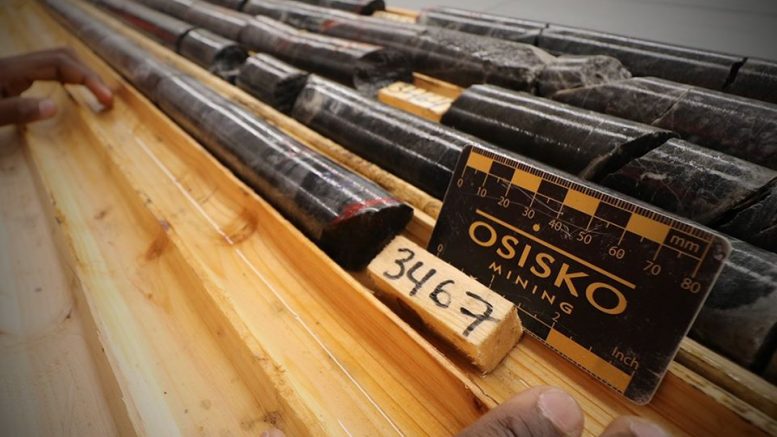
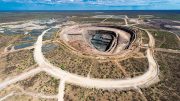
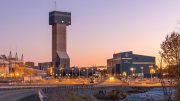
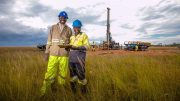
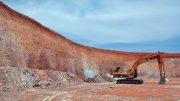
Be the first to comment on "Top 10 Canada-based precious metals developers"